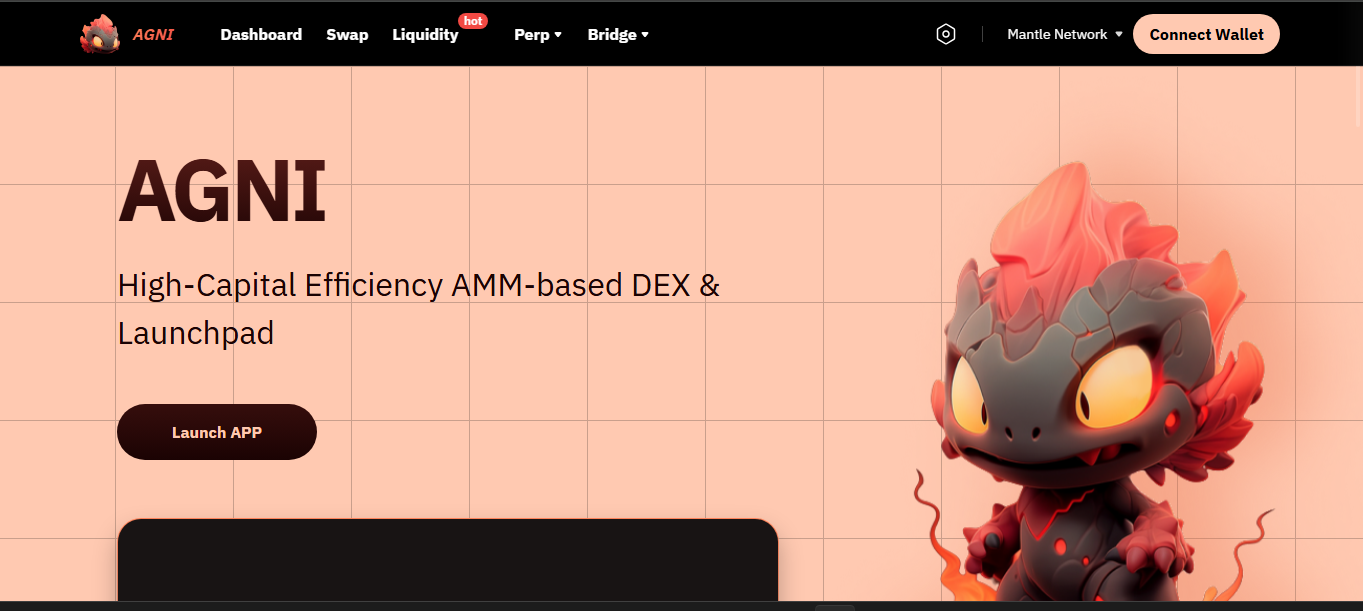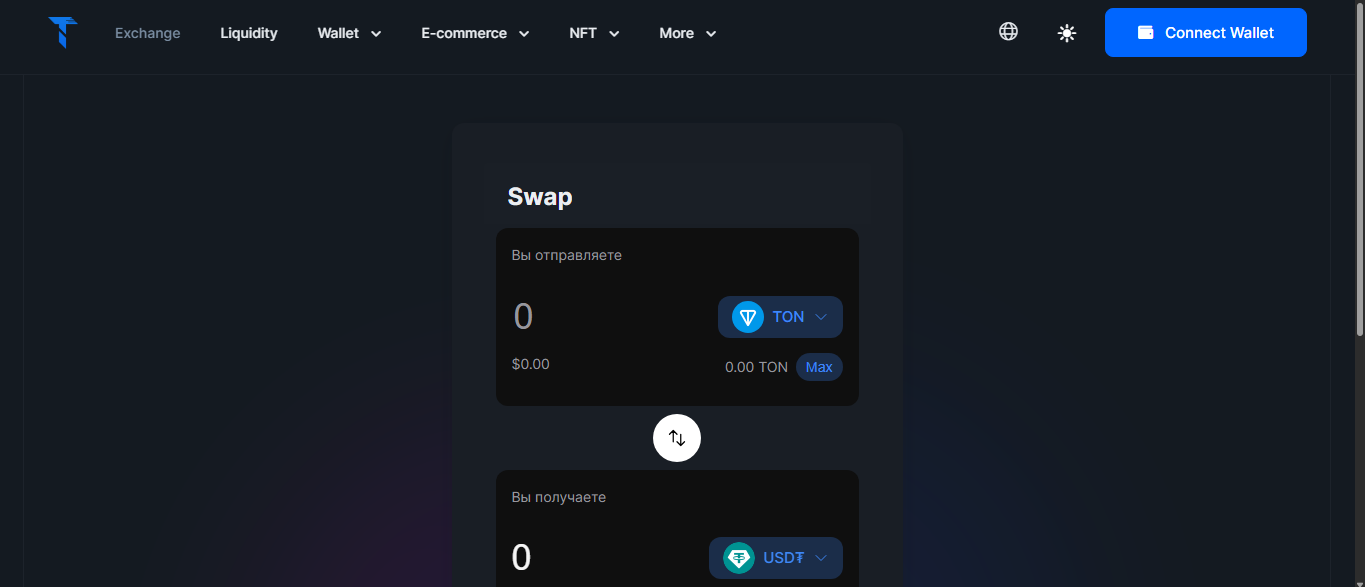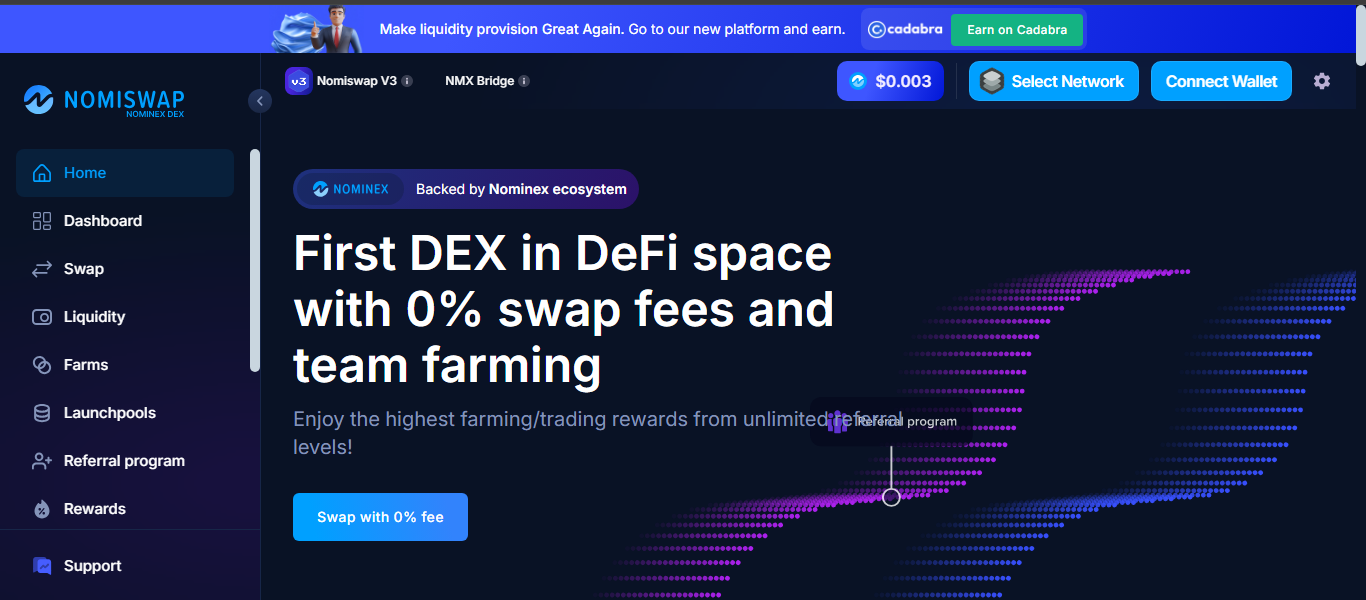ICO Rankings Blog
Discover a wealth of knowledge and stay up-to-date with the latest trends, news, and insights in the cryptocurrency and blockchain space through our blog.
Discover a wealth of knowledge and stay up-to-date with the latest trends, news, and insights in the cryptocurrency and blockchain space through our blog.
Agni Finance is a decentralized exchange and launchpad built on Mantle Network, live since 2023. It focuses on high‑capital‑efficiency AMM trading and supports a streamlined, on‑chain liquidity model.
Agni Finance sees around $2.1 million in daily spot trading volume - about 19 BTC - which reflects healthy early adoption on Mantle. Daily transaction counts hover near 57,700, with a 24‑hour DEX volume of approximately $3.4 million, placing it around the DEX rank 74 on Mantle. Total Value Locked (TVL) sits near $39 million, suggesting solid engagement by liquidity providers.
The platform offers trading across about 7 cryptocurrencies and 23–24 trading pairs, including METH, FBTC, USDe, WMNT, and cmETH. Its concentrated liquidity model allows LPs to set customized ranges, enhancing capital efficiency.
Recent additions include high-frequency pairs like USDE/WMNT, WETH/cmETH, FBTC/cmETH, and METH/cmETH.
Agni Finance generated approximately $2.3k in fees over the past 24 hours and nearly $163k in the past month, contributing to an estimated annualized fee figure of about $2 million. This revenue flows from transaction fees, reinforcing sustainability.
Agni Finance is a pure AMM DEX on Mantle and does not offer any fiat on‑ramp capabilities. Users must first obtain crypto (e.g., WMNT, METH) off‑platform before engaging in liquidity or trading on Agni.
As a decentralized protocol on Mantle, Agni Finance depends on audited smart contracts and on-chain verifiability. No formal regulation applies, but its transparent architecture allows community review and trust. TVL figures and liquidity data are fully visible on‑chain.
The swap interface is clean and direct, allowing users to connect wallets and execute trades instantly. Transactions happen entirely on-chain without login, aligning with DeFi norms.
Pros
Cons
Agni Finance is ideal if you:
This exchange might not suit you if you need fiat integration, customer support, or extensive token listings. It’s best as a complementary hub for Mantle‑native DeFi users.
Here’s a concise overview:
Agni Finance offers a compelling, on‑chain AMM experience on Mantle with efficient liquidity, transparent operations, and solid volume metrics. It’s a strong pick for crypto‑native users who value permissionless trading and capital efficiency.
However, lack of fiat access, limited token variety, and absence of centralized support mean it’s best used alongside broader DeFi and CeFi tools. If you’re active in DeFi and Mantle ecosystems, this DEX deserves a place in your portfolio toolkit.

Slingshot Finance is a decentralized finance (DeFi) platform and swap aggregator operating across multiple chains. It combines CEX-like trading performance with the openness of DEXs, and supports over 50,000 cryptocurrencies with zero swap fees. The interface is wallet-based and non-custodial.
Recent data show around $41k–$77k in 24-hour spot/Dex volume, supported by about 3 trading pairs and 4 tokens listed on its tracker. CoinMarketCap reports $46k in spot volume and 1 BTC in Dex volume in the last 24h. Though volumes are modest, they reflect early-stage activity and niche use.
Users can swap more than 40k–50k tokens across several major chains (Arbitrum, Ethereum, BNB, Polygon, Optimism). Liquidity is aggregated from multiple DEXs ensuring competitive rates. Wallet integration enables instant on-chain trading without account creation.
Slingshot charges zero swap fees, relying instead on routing profits between DEXs. Network fees are minimal - users report as low as $0.00001 and sub-second transaction times.
The platform supports fiat integrations: debit/credit cards, PayPal, Venmo, Apple Pay, and direct crypto transfers. This allows buying tokens directly before swapping.
Slingshot is fully non-custodial - no accounts or KYC required. Security is handled on-chain, and users maintain full control of their funds. No formal regulation applies due to its decentralized nature.
The UI is slick, fast, and intuitive. Web and mobile apps offer unified cross-chain swaps, real-time charts, and global chat. Reviews cite it as “clean,” “fast,” and better than many centralized apps.
Pros
Cons
Slingshot works best for:
Less suitable for users needing deep liquidity, institutional oversight, or human support - this is a self-directed DeFi tool.
Here’s a concise overview:
Slingshot Finance is a smart, modern DeFi tool tailored for wallet-native users who value fast, zero-fee swaps across chains and flexible fiat options. Its sleek interface and aggregated liquidity make it a standout among DEX aggregators.
However, limited volume and lack of centralized features or regulation mean it’s best paired with more conventional exchanges. Ideal for DeFi-savvy traders exploring diverse tokens quickly and cost-effectively.

Tegro Finance is a Gen‑2 decentralized exchange (DEX) and NFT20 marketplace that enables order‑book-style trading of NFTs and tokens across various EVM-compatible networks. Featuring bulk NFT trading, zero swap fees, and lightning-fast execution, it seeks to bridge centralized exchange precision with DeFi transparency.
Daily trading volume is currently untracked on central aggregators, signaling very low on‑chain activity. However, early user data suggests modest NFT and token interactions through its order‑book setup. TVL on the Mantle-based version is approximately $13,300 - indicative of niche usage but growing interest.
Tegro supports fungible representations of NFTs (NFT20 tokens) across Ethereum, Polygon, Arbitrum, BNB Chain, Avalanche, Optimism, and other blockchains. Users can trade both NFTs and their tokenized equivalents on an on‑chain order‑book. Token depth remains limited, but the range spans many projects using this model.
Trading on Tegro is gasless in terms of swap charges, relying on an order‑book model that eliminates swap fees entirely. Users pay only network fees, and early reports show they are minimal. Revenue mechanisms appear early-stage and centered on NFT20 pair spreads.
Tegro currently offers no fiat on‑ramp or support. It is fully DeFi-native, requiring users to bring tokens via external wallets before interacting with markets.
As a decentralized protocol, Tegro relies on audited smart contracts and on-chain transparency. There's no centralized control or KYC. Regulatory oversight is absent, but its open order-book design allows for full public verification.
The interface recreates centralized style trading with order-book depth charts and fast execution. Wallet connection is seamless, allowing cross-chain trades with no sign-up. Users report it feels familiar to CEX platforms, but with Web3 benefits.
Pros
Limitations
Tegro is ideal for:
It’s less suitable for traders needing strong liquidity, institutional compliance, or fiat access. Best as a supplemental NFT trading platform.
Here’s a concise overview:
Tegro Finance offers an innovative hybrid: NFT20 bulk trading via order-book style execution and zero swap fees. Its multi-chain support and CEX-like UX differentiate it in the NFT DEX space. However, its liquidity remains minimal (TVL ~$13K), and it lacks fiat integration or centralized support. This platform suits NFT-savvy users seeking novel trading methods on-chain - if you already have assets and are experimenting with NFT order-book dynamics, Tegro is definitely worth exploring.

FXDX sits on the Sui blockchain and does something different from most DEXs. It’s not just another swap app. Here, you get proper leverage, real order books, and the feel of a futures platform - without ever handing your money over to a third party. It’s for people who want DeFi to look and act like the pro tools they’re used to, but still keep control.
So what stands out? For starters, FXDX runs on Sui. That means trades settle crazy fast, and the network itself absorbs gas costs. You won’t get stuck paying surprise fees. It also gives you up to 50x leverage on big names like BTC and ETH. And the whole thing is non-custodial. Your wallet, your keys, always.
Most folks come here for the perps. That’s where you can pick your leverage, see your liquidation point right in the order form, and adjust margin on the fly. The interface makes it simple - like a regular futures exchange. If you’re not into leverage, there are plain spot trades too. Liquidity pools mix with order-book matching, so you’re not stuck with just one type of pricing.
Fees are where FXDX really pulls ahead. Takers usually pay about 0.05%. That’s lower than what you’ll find on many big platforms. If you’re a maker - placing orders that add to the book - you might even earn rebates. And spot trades? Near zero. Plus, with Sui covering network gas, you don’t pay to execute your trades.
Here’s the honest bit: FXDX isn’t some huge whale playground yet. Most volume happens on top pairs like BTC/USDC and ETH/USDC. Good enough for average positions, but monster trades might still nudge the price. Keeping to fewer pairs means what liquidity there is, stays concentrated.
No middlemen here. FXDX never holds your money. Trades happen straight from your wallet. That lowers a lot of risks - no exchange that can lock withdrawals or suddenly vanish. Smart contracts are audited, and you can see all the positions on-chain. It’s the usual trade-off: total control also means you’re the one responsible for keeping your keys safe.
One catch for newcomers is the lack of fiat ramps. You can’t load up with a credit card or wire. If you want to trade on FXDX, you’ll first need to get stablecoins like USDC elsewhere, then send them to a Sui wallet. For DeFi veterans, that’s normal. For complete beginners, it’s a step.
Lots of traders say FXDX feels surprisingly close to the big centralized sites. Charts respond instantly. You can drag your slider to change leverage. Orders fill fast, with no long waits for confirmation. That’s Sui’s speed in action. It doesn’t look or act like a clunky on-chain tool.
Pros
Limitations
FXDX is still growing. It’s not the biggest venue yet, but it brings something most DEXs don’t: serious leverage, slick execution, and no sketchy middlemen holding your money. It’s perfect for traders who already know how to handle their wallets and want futures-like power without trusting a centralized shop. For big newcomers, it might still feel early. As part of a wider crypto toolkit, though? It’s a sharp option worth trying out.

Nomiswap sits on BNB Chain and pitches itself as a next-gen DEX. It’s not just about swapping tokens. There’s a whole ecosystem built around liquidity pools, farming, referrals, and even something called NFT Staking 2.0. The platform tries to combine high yields with low fees, hoping to stand out from other pancake-style clones.
A few things jump out. Nomiswap pushes 0% swap fees if you provide liquidity. It runs an aggressive referral program that pays in trading commissions, not just one-off bonuses. And it tries to draw attention with frequent launches - new pools, fresh farms, NFT staking updates. Everything’s designed to keep users locked in and stacking rewards.
At the core, it’s still a DEX on BNB Chain. You can swap BEP-20 tokens easily. Beyond that, the big play is liquidity mining. You throw your assets into LPs, earn dual tokens or boosted APRs, and sometimes tie them up with NFTs to increase returns. There’s also standard single-token staking for people who’d rather not deal with impermanent loss.
Referral trees add another twist. Bring new wallets in, and you’ll get a cut of their trading fees over time. It’s more like building a downline than a quick invite bonus.
Here’s how it works. If you’re not providing liquidity, trades cost around 0.1%. That’s already cheaper than many DEXs. But if you do add liquidity, Nomiswap slashes your swap fee to zero. This model heavily rewards liquidity providers, making it feel like the platform’s structured almost entirely around keeping the pools fat.
Most of Nomiswap’s activity stays tied up in BNB, BUSD, USDT, and a handful of popular altcoins. Daily volume usually floats between $5 million and $15 million. Enough for retail moves, but huge players might shake things. Liquidity pools are deep on the main pairs, but trail off quickly once you get into lesser tokens.
This is a standard fully non-custodial setup. You trade from your wallet, no sign-ups or KYC. Contracts have been through audits. TVL is public, pools are all visible on-chain. That’s the normal DeFi promise - no middleman holding your assets. Still, with BNB Chain’s past hacks and the usual smart contract risks, most folks keep only what they’re actively using here.
There’s no direct fiat on-ramp. If you want in, you’ll need to get BNB or stablecoins elsewhere first and then connect your wallet. That’s typical for BNB Chain projects. Beginners might need an extra step using an exchange or aggregator to move money over.
Nomiswap’s dashboard is slick, with bold colors and playful charts. It’s made for DeFi regulars - farms, pools, APYs, plus your share of referral income all right there. If you’ve used PancakeSwap or Baby Doge, it feels instantly familiar. Swaps are fast, LP adding is straightforward, and everything confirms quickly since BNB Chain blocks are short.
Pros
Limitations
Nomiswap packs a lot into a typical BNB Chain package. You get swaps, pools, farming, and even quirky NFT staking twists that can up your yield. The zero-fee angle for LPs is a real draw, especially paired with long-haul referral rewards. Just know you’re operating in the usual DeFi wild west - no fiat ramps, no backstops, and all risk on you. For people already moving around BNB Chain looking to farm or flip, it’s a solid piece of the ecosystem. For newcomers? You’ll want to tiptoe in carefully.

Phemex is one of those crypto platforms that tries to straddle two worlds. You get hefty leverage on perpetual contracts alongside a busy spot market. Based in Singapore and running since late 2019, it’s become a recognizable name, drawing traders who want a mix of speed, tools, and a UI that feels like the big guys.
Here’s a quick snapshot: It’s a centralized exchange offering BTC, ETH, USDT, SOL, and a pile of alt pairs, with futures up to 100x. There are zero-fee spot options if you hold their premium. It also has launchpads, earn products, and a flexible approach to asset custody.
What brings most people to Phemex is the combo of spot trading and derivatives. You can go long or short on dozens of contracts with leverage settings that slide from 1x all the way up to 100x. The matching engine is fast - designed to handle high-frequency orders without noticeable lag.
The spot side covers all the usual big coins plus plenty of mid-caps and meme tokens. They also throw in direct swap options, making quick conversions simpler if you’re just rotating portfolios without caring about order book price action.
Spot traders on Phemex pay around 0.1% for taker orders. Makers often get small rebates or reduced rates. If you’re a premium member, many spot trades drop to zero commission, which is a massive pull for high-frequency players.
On the derivatives side, typical fees hover near 0.075% taker, slightly under many global competitors. Funding fees for perps flip depending on the contract balance - longs pay shorts or vice versa to keep markets aligned.
Phemex pulls in daily volume ranging between $500 million and $2 billion across all markets. The bulk sits on BTC and ETH contracts. Depth is solid enough that most retail or mid-size positions won’t budge the book. But start pushing six-figure trades on low-cap pairs and you’ll still see some slip. It’s what you’d expect - heavy liquidity on majors, lighter on the long tail.
Unlike DeFi setups, Phemex is a custodial exchange. Your assets sit on their books. But they tout hybrid wallet systems, mixing cold and hot storage, plus regular proof-of-reserve checks. Two-factor and withdrawal whitelists add layers, though at the end of the day, your coins are with them, not in your private wallet.
This is the classic tradeoff: get order book speed and simplicity, but trust the platform to safeguard your balances.
Phemex keeps it flexible. You can wire in fiat or use cards through third-party processors. They also have direct crypto deposits if you’re shifting over from a wallet. Fiat onramps make it friendly for people who don’t want the hassle of juggling multiple platforms just to get started.
This is a good match for traders who want:
It’s less ideal if you’re hunting DeFi-style self-custody or obscure tokens only found on DEXs.
Pros
Cons
Phemex wraps a lot of tools into a clean, centralized bundle. It’s fast, covers leverage and spot under the same login, and lets you load up with fiat or crypto. For active traders who don’t mind trusting an exchange to hold funds, it’s an attractive mix of convenience and market depth. But if you’re deep into DeFi or hardcore about self-custody, you might see it as just another CEX middleman. As always, it depends on how much control you’re willing to trade for speed and simplicity.
